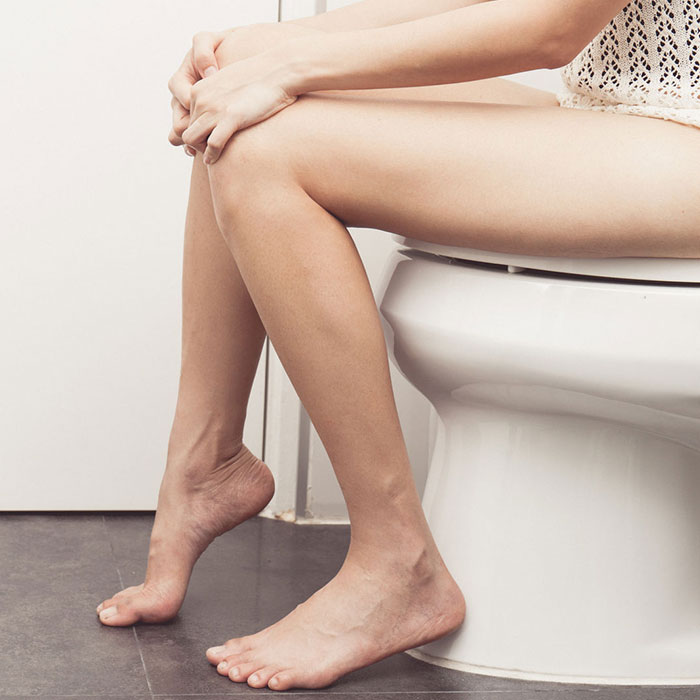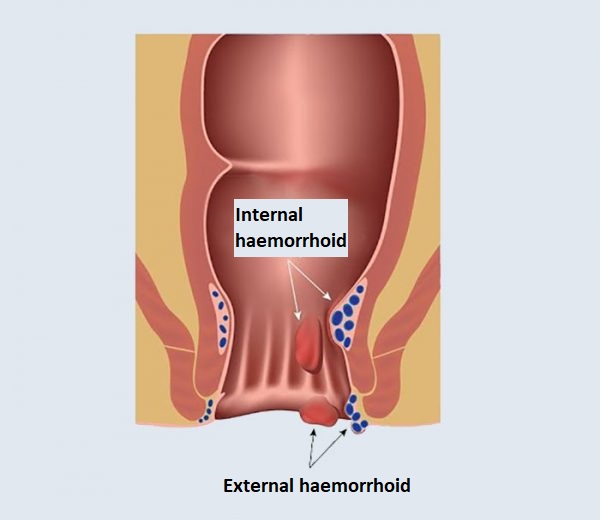Haemorrhoid treatment - Haemorrhoid surgery
What is a haemorrhoid and how does it develop?
Haemorrhoids are the dilatation of blood vessels located under the skin surrounding the anus (external haemorrhoids) or on the inner wall of the rectum (internal haemorrhoids). The most common causes of haemorrhoids are malnutrition, sedentary lifestyle, obesity, and constipation strain. Haemorrhoids can become inflamed, enlarged, they can bleed, and in some cases turn out, causing pain and further complaints. Failure to treat more severe stage of haemorrhoids can lead to further complaints and complications.
Internal haemorrhoids are mostly painless and not perceptible. Their presence may be indicated primarily by bloody stools.
External haemorrhoids, which are located under the skin around the anus, are usually painful. During bowel movements, the patient often experiences not only pain but also itching and bloody stools.
Stages of haemorrhoid

The development of haemorrhoids can be prevented with proper eating habits and regular exercise. Several stages of the endemic, which affects almost half of the adult population in developed countries, are known, from mild to persistent pain. In the initial stage, the enlarged nodules are asymptomatic around the anus. In the second stage, during defecation, the nodules protrude beyond the anus and then retract. In the third stage, the protruding haemorrhoid, which do not recede on their own (can be put back by hand), can cause more severe pain or bleeding. The highly sensitive and painful protruding haemorrhoid nodule in the fourth stage can no longer be inserted back into the anus by hand, so the treatment of haemorrhoid in this case can only be performed surgically.
What are the symptoms of a haemorrhoid?
painful defaecation
severe, rectal itching
bloody, mucous stools
long-term constipation
venous swelling in the wall of the rectum or around the anus
What causes haemorrhoids?
Constipation
Excessive exertion during defecation increases the pressure on the vein wall, which dilates the veins. In more severe cases, exertion causes the internal haemorrhoidal lumps to move out of the anus with the mucosa that covers it, causing itching, pain, and additional urge to defecate.
Diarrhoea
Frequent defecation also take too much strain and dilate the veins.
Improper nutrition
A diet low in fibre, high in carbohydrate, fatty, spicy and intensely spiced foods, and insufficient fluid intake can lead to haemorrhoids.
Overweight
Increased abdominal pressure in case of an overweight individual may be the cause of haemorrhoids.

Connective tissue weakness
Connective tissue looseness is mostly of genetic (hereditary, familial occurrence) origin.
Pregnancy
Haemorrhoids are caused by hormonal changes (slowing of circulation and increased pressure in the veins) and an enlarged uterus, which puts pressure on the perineum and haemorrhoidal pads near the anus. After childbirth, haemorrhoids usually recede.
Diseases
Haemorrhoids can also be caused by rectal cancer or chronic liver disease.
Treatment of haemorrhoids
In the early stages of the disease, haemorrhoids are treated with medications and diet. Changing lifestyle and eating habits is essential for the treatment to be effective. Consuming fibre-rich foods, increasing your daily fluid intake, and regular exercise all increase the effectiveness of your treatment. The main goal in treating haemorrhoids is to eliminate inflammation, relieve pain, and normalize stool.
When is haemorrhoid surgery needed?
In more severe cases, the proctologist decides to surgically treat haemorrhoid when medication and changes in eating habits together do not have a result.
Surgical treatment of haemorrhoid can be done by conventional surgical removal (haemorrhoidectomy) as well as with the Longo method.
How is haemorrhoid surgery performed?
During the preoperative consultation, the proctologist will provide detailed information about the necessary preoperative tests, as well as the course of the surgery and its risks.
The surgery is performed under anaesthesia. During the surgical excision of haemorrhoids (haemorrhoidectomy), the proctologist removes the hemorrhoidal set from the rectal muscle surrounding the anus after making an incision of the skin and mucosa, then occludes the vessel and removes the dilated hemorrhoidal pads.
The length of hospital stay is 1 day.
What are the advantages and risks of the surgery?
After the procedure, both pain and bleeding cease. Haemorrhoid surgery is a routine procedure during which minimal risk can be expected.
Possible complications
blood loss
constriction of the anus
sphincter injury
continentia difficulty
fistula formation
recurrence of complaints
suture insufficiency
post-surgical bleeding

